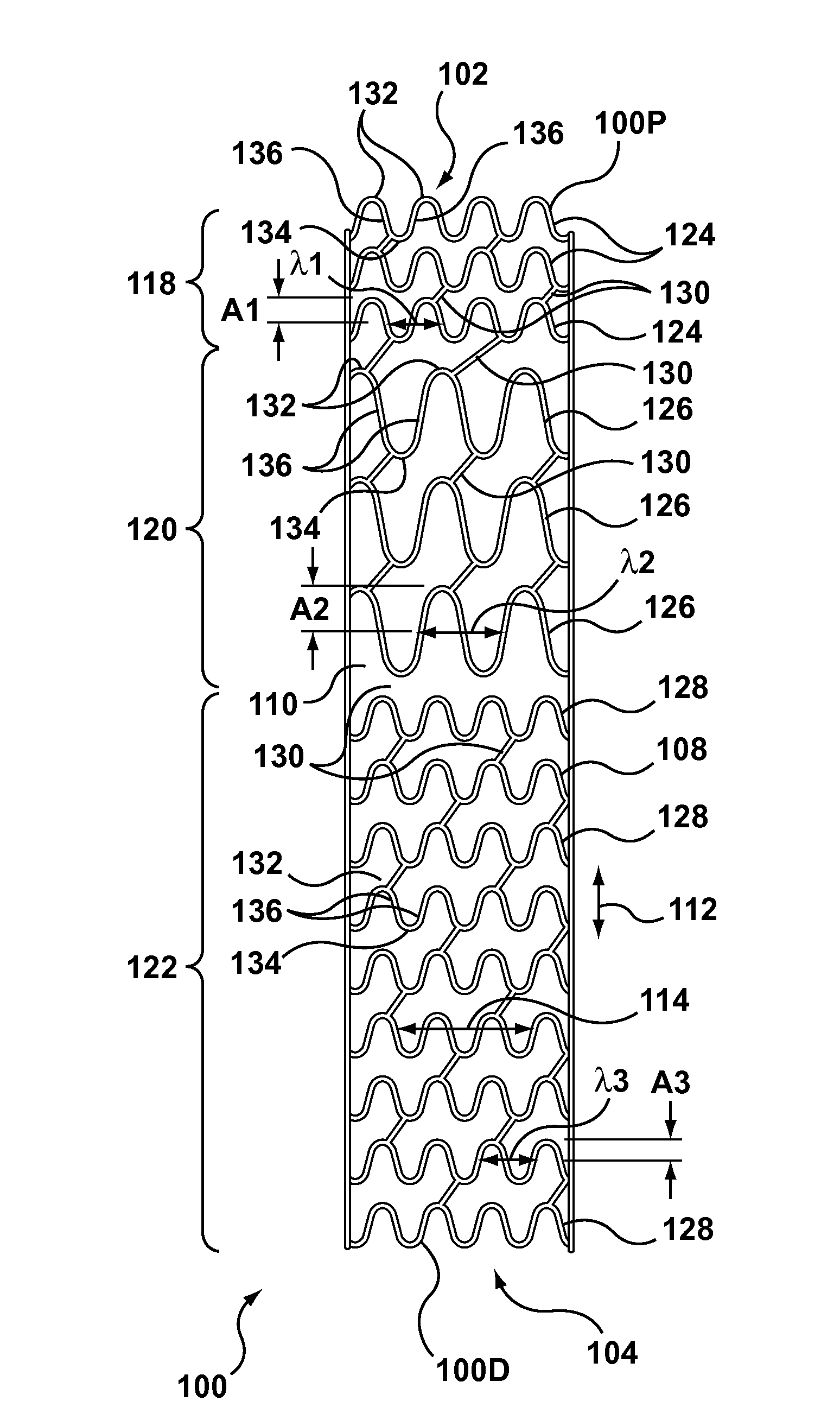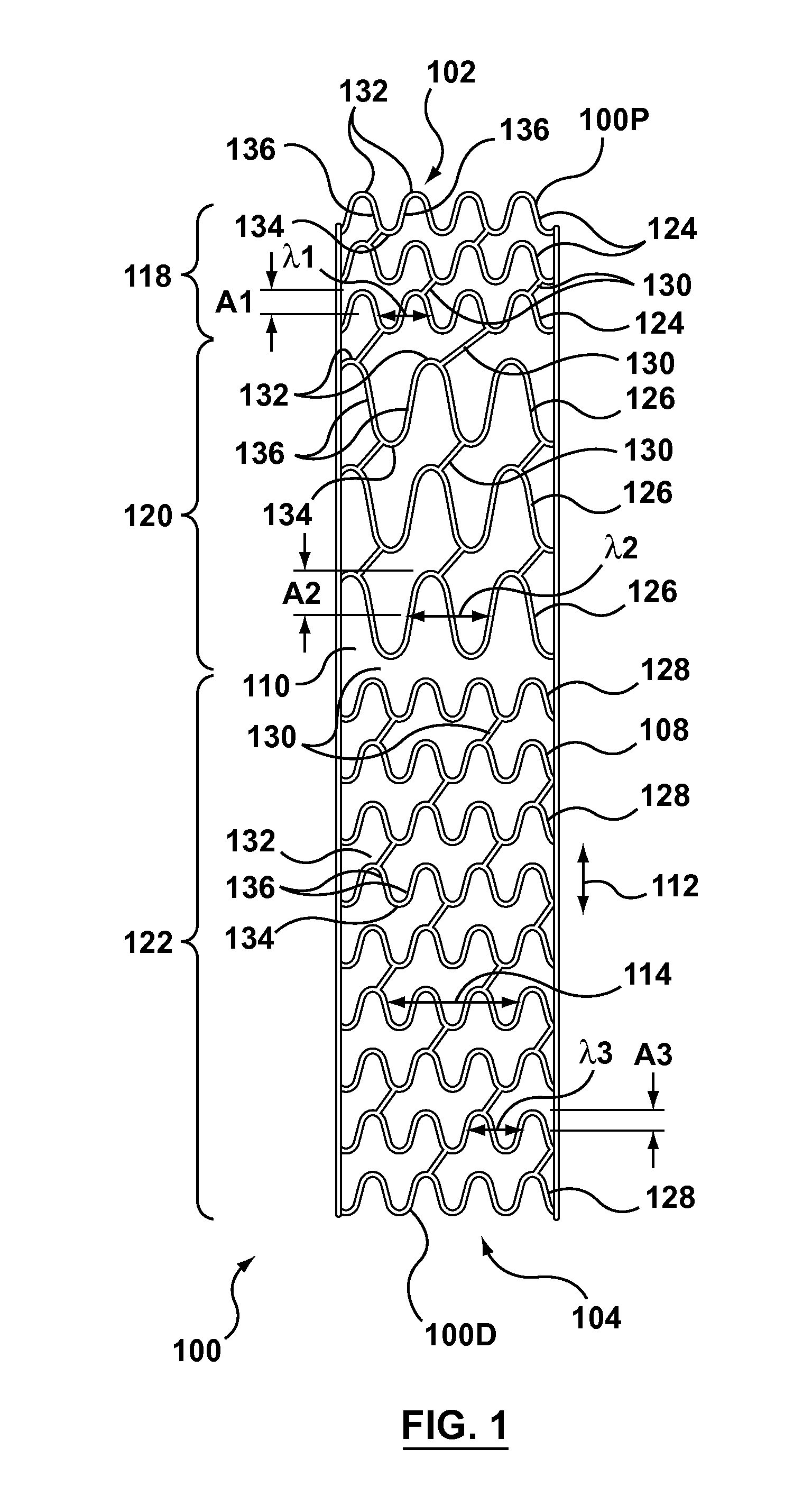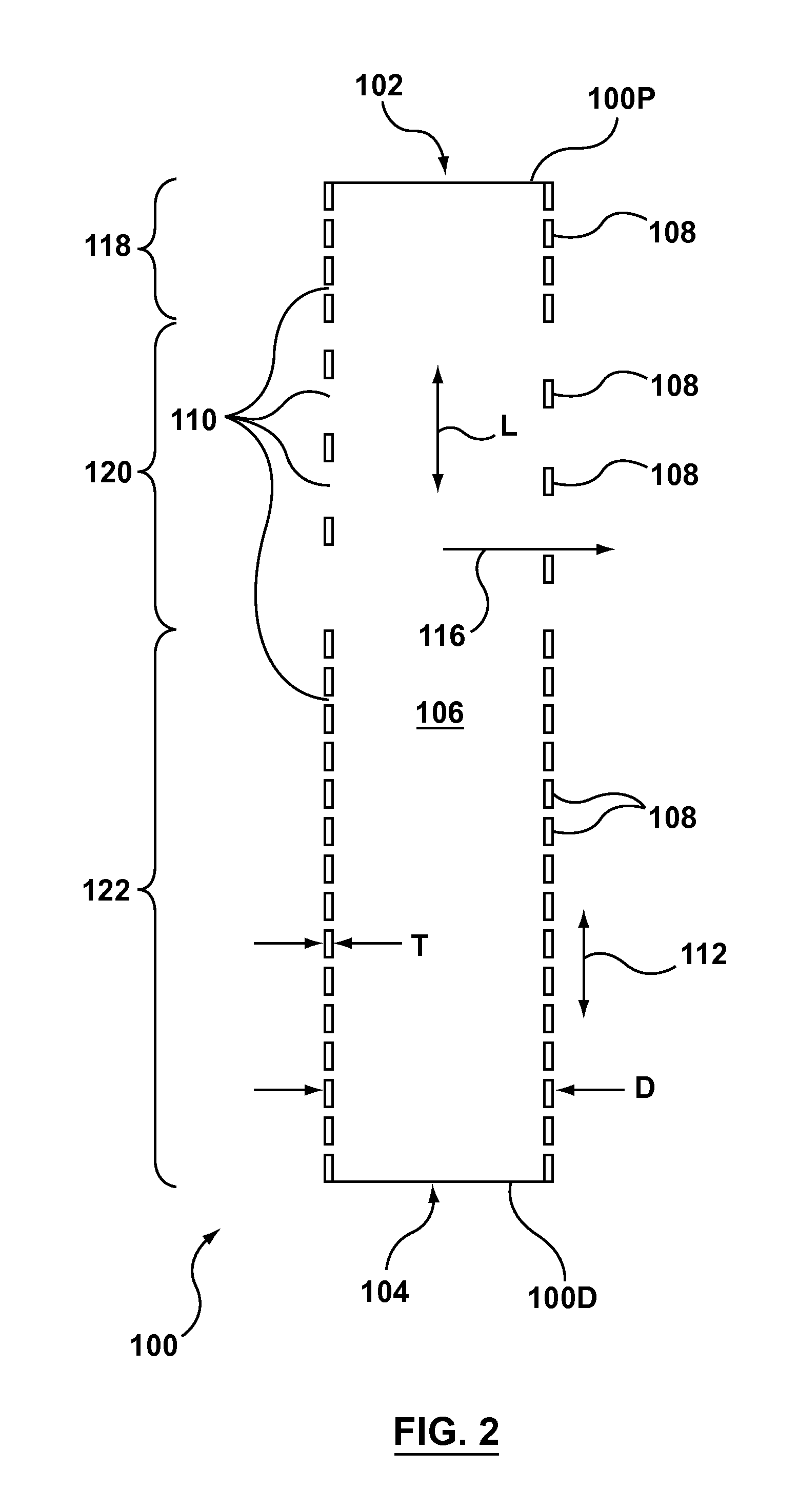Variable zone high metal to vessel ratio stent and method
a variable-zone, high-metal-to-vessel ratio technology, applied in the field of intravascular devices and methods, can solve the problems of increasing the risk of the procedure, high cost of custom fabrication of stent-grafts, and increasing the time consumption of surgeons, so as to reduce the time and complexity of the procedur
- Summary
- Abstract
- Description
- Claims
- Application Information
AI Technical Summary
Benefits of technology
Problems solved by technology
Method used
Image
Examples
Embodiment Construction
[0019]As an overview and in accordance with one embodiment, referring to FIGS. 1, 2, and 5 together, a variable zone high metal to vessel ratio stent100 includes a proximal high metal to vessel ratio zone 118, a central low metal to vessel ratio zone 120, and a distal high metal to vessel ratio zone 122. Proximal high metal to vessel ratio zone 118 is deployed with fixation and sealing to healthy tissue of a main vessel 304 superior to branch vessels 308, 310 and an aneurysm 306.
[0020]Central low metal to vessel ratio zone 120 is deployed directly on ostai 322, 324 of branch vessels 308, 310, respectively. However, as central low metal to vessel ratio zone 120 is highly permeable, blood flows from main vessel 304 through central low metal to vessel ratio zone 120 and into branch vessels 308, 310 thus perfusing branch vessels 308, 310.
[0021]Further, distal high metal to vessel ratio zone 122 covers and excludes aneurysm 306. As variable zone high metal to vessel ratio stent 100 is in...
PUM
| Property | Measurement | Unit |
|---|---|---|
| area | aaaaa | aaaaa |
| area | aaaaa | aaaaa |
| RA | aaaaa | aaaaa |
Abstract
Description
Claims
Application Information
 Login to View More
Login to View More - R&D
- Intellectual Property
- Life Sciences
- Materials
- Tech Scout
- Unparalleled Data Quality
- Higher Quality Content
- 60% Fewer Hallucinations
Browse by: Latest US Patents, China's latest patents, Technical Efficacy Thesaurus, Application Domain, Technology Topic, Popular Technical Reports.
© 2025 PatSnap. All rights reserved.Legal|Privacy policy|Modern Slavery Act Transparency Statement|Sitemap|About US| Contact US: help@patsnap.com



